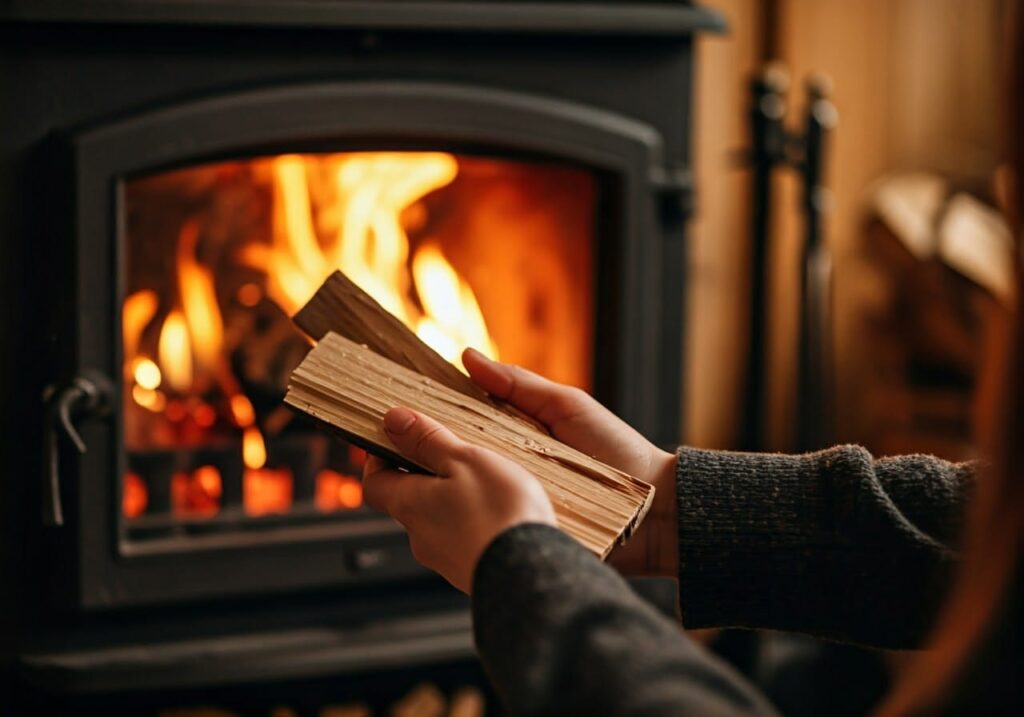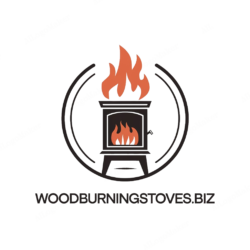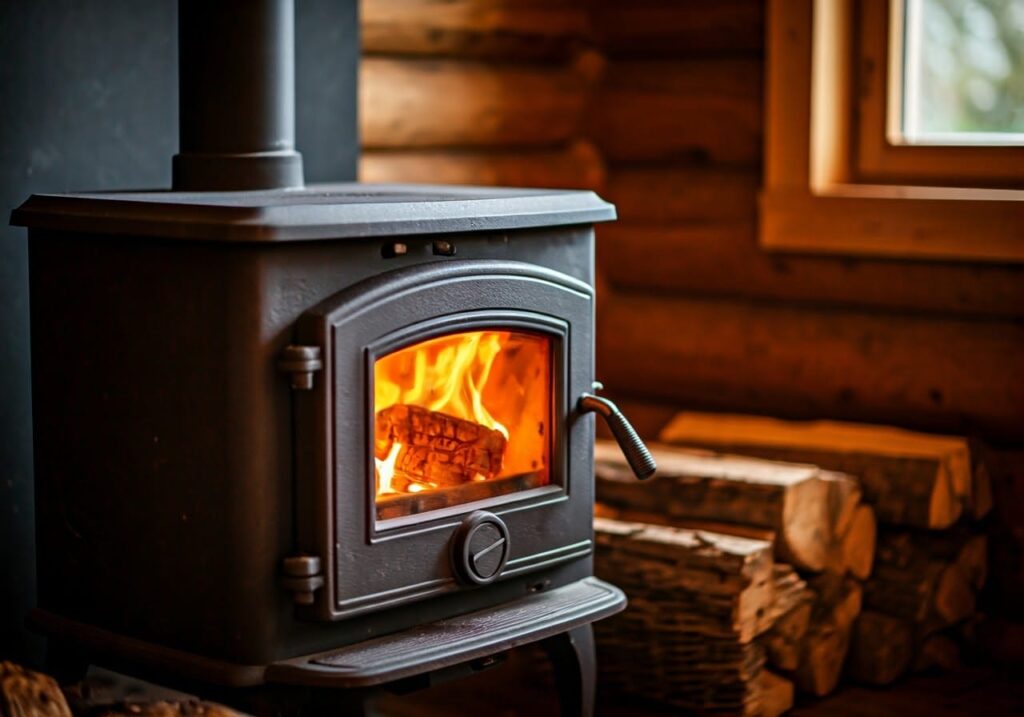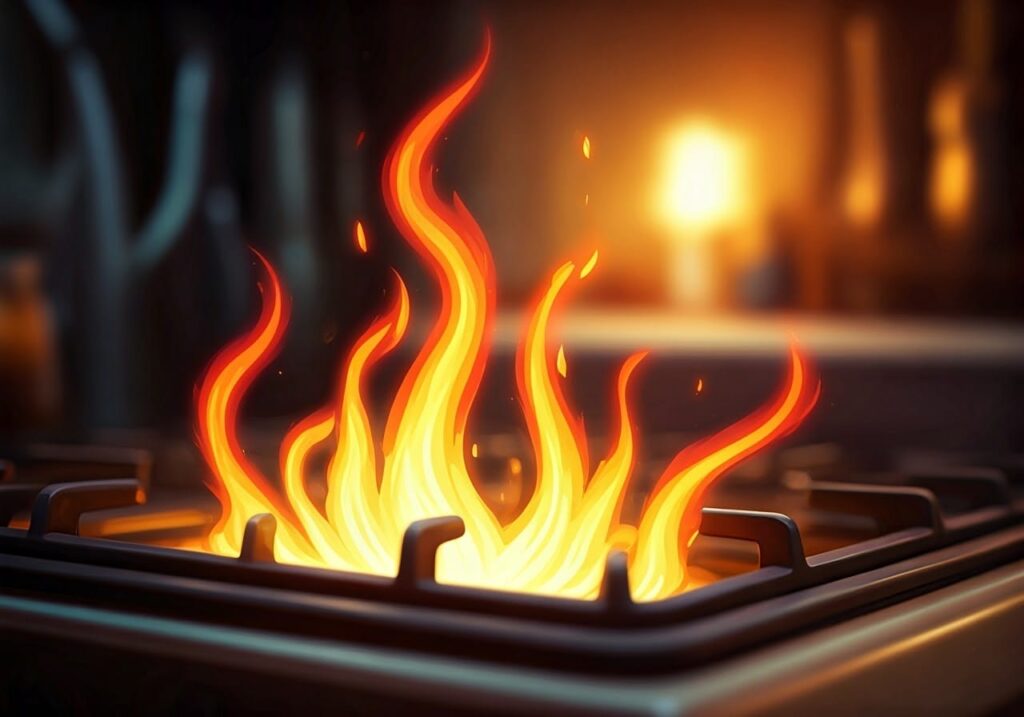While our comprehensive guide to wood-burning stoves covers the basics, this detailed exploration focuses on day-to-day operation. Efficient operation not only saves money and resources but also extends the life of your stove while providing optimal heat output. Let’s dive into the essential aspects of running your wood stove at peak efficiency.

Starting Your Fire Right
The way you start your fire sets the tone for your entire burning session. Many beginners make the mistake of using incorrect materials or techniques, leading to smoky, inefficient fires. Here’s how to get it right from the start:
Preparation Steps
Before striking that first match:
- Clean ash (leaving 1-inch base)
- Check air controls
- Prepare kindling variety
- Position starter materials
- Ensure proper ventilation
Initial Fire Building
The foundation of a successful burn:
- Layer materials properly
- Use appropriate kindling
- Create proper air spaces
- Position larger logs correctly
- Maintain proper airflow
Managing the Burn Cycle
Understanding the burn cycle is crucial for maintaining consistent heat output. Each phase of the burning process requires different management techniques, and knowing when to make adjustments can significantly impact your stove’s performance:
The Three Burn Phases
Learning to recognize and manage each phase:
- Starting phase management
- Main burn considerations
- Coal bed maintenance
- Phase transition timing
- Temperature monitoring
Temperature Control
Maintaining optimal burning conditions:
- Using stove thermometer
- Reading visual indicators
- Adjusting air controls
- Managing fuel loads
- Responding to conditions
Fuel Management
The type and quality of wood you use directly affects your stove’s performance. Proper fuel management involves more than just throwing logs into the firebox:
Wood Selection
Choosing the right fuel makes all the difference:
- Hardwood characteristics
- Softwood applications
- Moisture content importance
- Size considerations
- Mixed wood strategies
Loading Techniques
How you load your stove affects burn efficiency:
- Proper log placement
- Air space requirements
- Load size optimization
- Reloading timing
- Coal bed management
Advanced Operation Techniques
Once you’ve mastered the basics, these advanced techniques can help you achieve maximum efficiency. These methods require practice but can significantly improve your stove’s performance:
Fine-Tuning Burns
Optimizing your fire for different conditions:
- Weather adaptations
- Draft management
- Load size adjustments
- Temperature control
- Burn time extension
Overnight Burns
Maintaining heat through the night:
- Proper wood selection
- Loading strategies
- Air control settings
- Safety considerations
- Morning restart techniques
Seasonal Operation Adjustments
Different seasons present unique challenges for wood stove operation. Understanding how to adapt your burning technique to seasonal changes is crucial:
Cold Weather Operation
Maximizing heat during peak demand:
- Draft management
- Fuel selection
- Loading frequency
- Temperature maintenance
- Heat distribution
Shoulder Season Burning
Managing heat during mild weather:
- Small fire techniques
- Temperature control
- Preventing overheating
- Draft challenges
- Fuel selection
Safety and Monitoring
Safe operation requires constant attention to multiple factors. Developing good monitoring habits helps prevent problems before they occur:
Regular Checks
Essential monitoring practices:
- Temperature readings
- Smoke observation
- Air control positions
- Ash level management
- Glass condition
Warning Signs
Recognizing potential problems:
- Overfire indicators
- Poor combustion signs
- Draft issues
- Mechanical problems
- Safety concerns
Maintenance During Operation
Regular maintenance during operation keeps your stove running efficiently. These tasks, performed while using your stove, prevent many common problems:
Daily Tasks
Routine maintenance requirements:
- Ash management
- Glass cleaning
- Air control checks
- Temperature monitoring
- Draft assessment
Weekly Checks
More involved maintenance needs:
- Deep ash cleaning
- Gasket inspection
- Air path clearing
- Tool maintenance
- Safety system checks
Stove Troubleshooting Guide: Essential Maintenance and Safety Solutions
When your wood-burning appliance or heating system encounters issues, proper diagnosis and repair procedures are crucial for safe operation. Regular maintenance and prompt attention to minor problems can prevent major complications and extend your equipment’s lifespan. This comprehensive troubleshooting guide addresses frequent complications and emergency scenarios that every stove owner should understand.
Common Operational Challenges
Heat generation and combustion efficiency stand as primary concerns for wood stove operators. When thermal output becomes insufficient or fuel consumption seems irregular, it often indicates underlying issues with air flow or fuel quality. Extended warm-up periods and inconsistent temperature regulation can significantly impact your heating system’s performance and should be addressed promptly to maintain optimal operation.
Ventilation and Exhaust Concerns:
- Backdrafting through flue system
- Inadequate chimney draw
- Visible smoke emission
- Creosote accumulation patterns
- Incomplete combustion signs
The control system serves as your stove’s command center, regulating everything from air intake to heat output. Problems with damper mechanisms, gasket seals, or door alignments can compromise your stove’s efficiency and safety. Regular inspection of these components helps maintain precise temperature control and optimal performance throughout the heating season.
Critical Emergency Response Protocols
Chimney fires and overheating situations demand immediate attention and specific response procedures. Recognizing the warning signs – such as roaring sounds, intense heat, or visible flames from the chimney – allows for quick action that can prevent catastrophic damage. Implementation of proper shutdown procedures and professional inspection requirements should follow any serious incident.
Environmental Safety Responses:
- Carbon monoxide detection
- Smoke containment methods
- Proper ventilation restoration
- Emergency contact procedures
- Backup heating options
Equipment failures rarely occur without warning signs. Developing a systematic approach to diagnostics helps identify problems early, when they’re typically easier and less expensive to resolve. Coordinating with professional service providers and maintaining detailed maintenance records ensures your heating system receives appropriate care and timely repairs when needed. This proactive approach to stove maintenance not only enhances safety but also optimizes performance throughout the system’s operational life.
Conclusion
Efficient wood stove operation requires attention to detail and regular maintenance. By following these guidelines, you can maximize your stove’s performance while maintaining safety. For more detailed information about wood stove selection and installation, visit our complete guide on wood-burning stoves.


